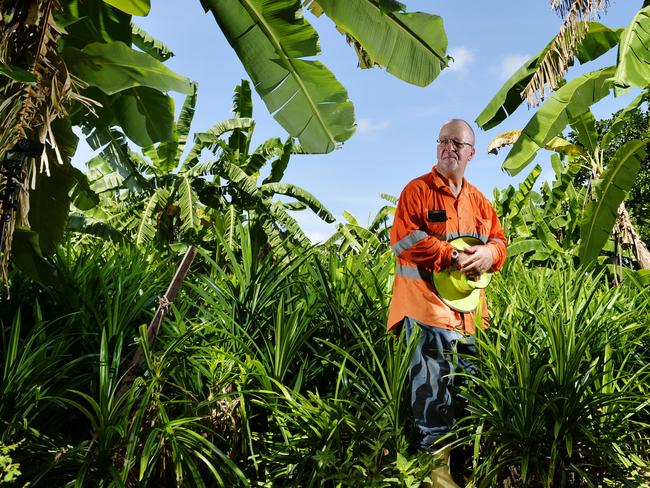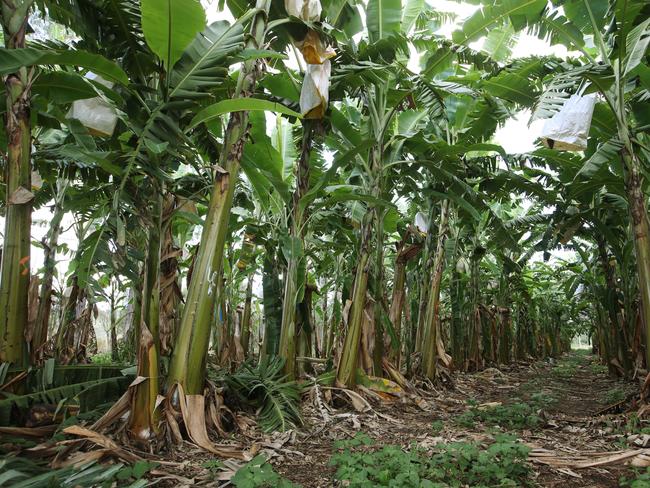‘Absolutely shocking’: Banana Freckle has emerged again on Top End plants
It meant farmers lost years’ worth of hard work in 2015 and now banana freckle is back, properties may lose their crops if infected. Read how it spreads.
Northern Territory
Don't miss out on the headlines from Northern Territory. Followed categories will be added to My News.
Top End banana farmers’ recurring nightmare is looming large as authorities search hundreds of properties to discover more cases of the devastating banana freckle disease.
Investigations are under way as to how the fungal disease has reappeared in the Territory, already destroying one commercial farm’s crop.
There are 42 properties, out of 1800 searched since May 2022, on which the disease has been detected, mostly in the Batchelor and Rum Jungle region.
The disease, which appears as spots and with sandpaper texture, has also been found in smaller numbers at properties in Middle Point, Marrakai, Fly Creek and on the Tiwi Islands.
It is not the first time it has interrupted production of Top End banana farms.
In 2015, Top End banana farmer Pieter Bekkers was ordered to have his whole plantation of about 500 to 1000 banana trees destroyed after the NT Department of Primary Industry announced numerous eradication zones.

Mr Bekkers on Wednesday said he was a victim caught in the firing line during the 2015 crackdown on the disease as not a single banana plant on his Virginia property was infected.
He said it was “absolutely shocking” to see his once thriving banana crop become a flattened mess of leaves and squashed bananas.
“My wife was in tears,” Mr Bekkers said.
The Rapid Creek Market stallholder still sells produce on a Sunday but never returned to commercial banana farming again out of distrust of the government and the fear he could lose his crop again.
He said he was never compensated for his financial loss of $5000 to $10,000.
The Department of Industry, Tourism and Trade has since revised its banana freckle plan to only destroy crops on farms found to have the disease.
Principal Plant Biosecurity Officer Claire Morton said if banana freckle was detected on a property, all banana plants and plant material on the property would be removed.
But if a property owner had healthy banana plants which did not have banana freckle, Ms Morton said “those plants (would) not be removed”.
“However, surveillance will continue on those properties to ensure plants remain healthy,” she said.
Ms Morton said banana freckle was a fungal disease of banana leaves – a ‘wet spore’ organism.
“It generally moves short distances by water droplet splashes and wind-driven rain,” she said.
“The fungus is spread over larger distances by people moving infected fruit, leaves and suckers used for planting.”
There is no risk to human health from eating banana freckle infected fruits.
The disease is declared a pest under Northern Territory Plant Health Act 2008.

Ms Morton said the department would work closely with the affected commercial grower in the Top End through the eradication process such as helping them apply for compensation under the response plan.
“Owner reimbursement costs are an established system under the framework of the Emergency Plant Pest Response Deed which is supported by the Commonwealth Government, states and territories and affected industry parties,” she said.
The quality of the fruit and the plant is heavily affected by the unassuming in appearance fungus.




